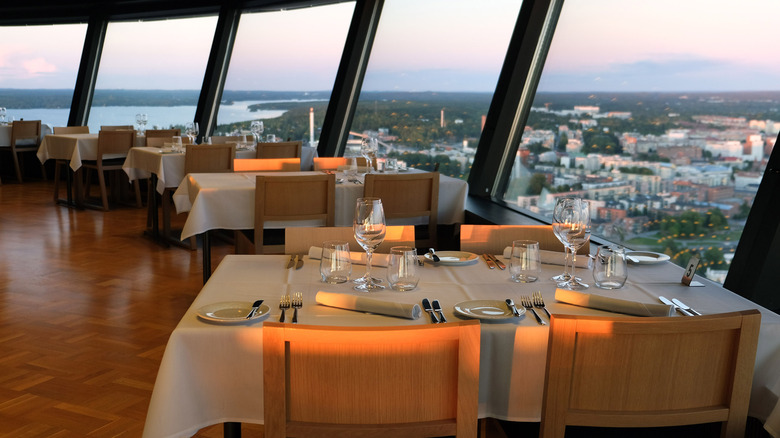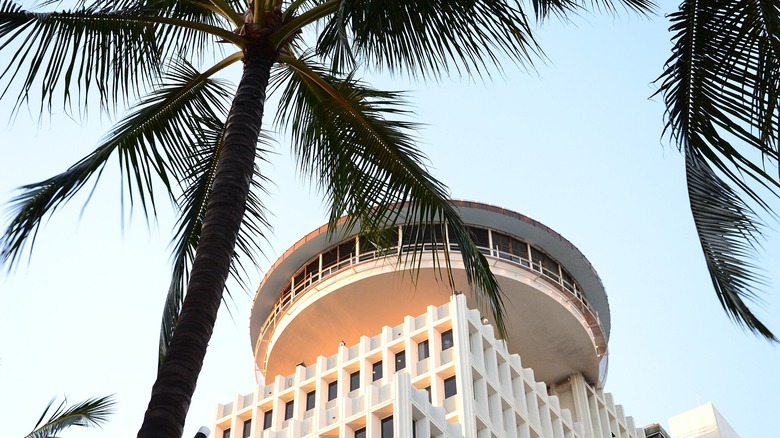How Fast Do Revolving Restaurants Actually Spin?
If you've ever gone 'round and 'round on an amusement park carousel, you may balk at the idea of combining spinning and eating, but revolving restaurants are a thing — and some people love them. First things first: The spin is a slow roll with most of the world's best-known revolving dining rooms moving at a speed of about one full revolution per hour. It's gradual enough that the movement is almost indiscernible to humans. While the era of revolving restaurants may have hit its heyday in the mid-20th century, quite a few of the high-in-the-sky venues continue to welcome patrons around the world. And the majority of those still operating in the Western Hemisphere were built by the same company, Macton Corp., founded in 1947 and currently owned by Ohio-based BBM Railway Equipment.
Following the successful debut of a revolving stage created in Jones Beach, New York, Macton began building revolving restaurants. The company's roster includes such well-known landmarks as CN Tower in Toronto and Stratosphere in Las Vegas, in addition to more than 100 other venues around the world. According to the company website, the revolving turntables (it's not the restaurant that moves, it's the platform supporting the dining room) are built to minimize the perception of movement and noise. What about speed? Let's just say that's up to management. A control panel lets operators adjust speed and direction at will.
[Featured image by kallerna via Wikimedia Commons | Cropped and scaled | CC BY-SA 4.0 DEED]
What goes 'round, comes 'round in more ways than one
While some sources trace the origins of revolving restaurants to ancient Rome, historians pin the modern-day incarnation of dining in the round to the Florianturm in Dortmund, Germany. When the restaurant opened on May 1, 1959, the Florianturm was the tallest building in Europe. Timing couldn't have been better. It was the early years of the Space Age. Cartoons like "The Jetsons" were reimagining a futuristic existence. Seattle's Space Needle was drawing crowds at the 1962 World's Fair (spaceburgers, anyone?). Revolving restaurants began popping up everywhere. At the height of their popularity, revolving restaurants were wowing guests at locations in more than half of the 50 U.S. states and close to 70 countries worldwide.
But back to speed. Given the complexity of operating a giant turntable for diners, one might think the control panel would be tucked in a secret vault. Surprise. Most of the time, the machinery is run from the restaurant's greeting station. And about that one-turn-per-hour average? Turns out most systems don't have a maximum speed. Yes, we're giggling at the image of a surly server cranking the system into overdrive and spinning patrons who don't follow basic dining etiquette into oblivion. But seriously folks, management sometimes relies on the controls to serve up a subliminal message. Apparently, studies show a faster rotation results in quicker table turnover.
[Featured image by Simon_sees from Australia via Wikimedia Commons | Cropped and scaled | CC BY 2.0 DEED]

